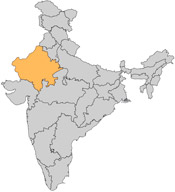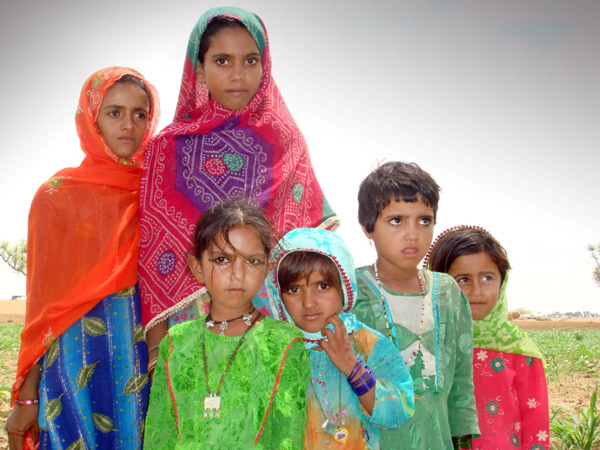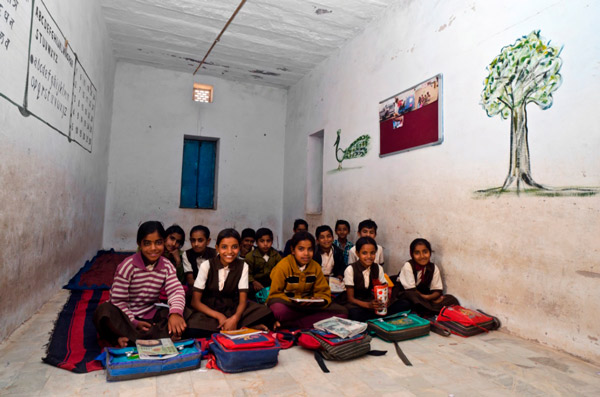
According to the World Health Organization, at least half of the people living in the world today do not have access to the basic health services they need. And in India alone, nearly 600 million people — mostly in rural areas — have little to no access to healthcare at all.
That’s why our Healthcare 2 Unreached program has joined forces with GRAVIS, a renowned NGO making incredible strides in improving healthcare access in remote areas of India.
For more than 35 years, GRAVIS has served marginalized communities in the Thar Desert — which, despite its long history of severe droughts, is the most densely populated desert on the planet. In addition to living with virtually no basic health services, people in this area also face issues like food and water scarcity, feudalism, and extreme gender discrimination. These conditions have resulted in the widespread neglect of women and children, high pregnancy and miscarriage rates, and significant malnourishment among children under 15.

In early 2017, Share & Care and GRAVIS initiated the Improving Child and Mother Survival project to improve life for the most marginalized members of society in this desert.
How the Project Works
The Improving Child and Mother Survival project is estimated to affect 600 women, 1,200 children, and 400 adolescents in the Osian block of Jodhpur district, Rajasthan. The objective of the project is to reduce infant and maternal mortality in three specific villages in this region. To meet that objective, we are using four main strategies:
1. Conduct trainings tailored to the needs of women, children, and adolescents.
Share & Care and GRAVIS both operate according to the Gandhian philosophy of self-reliance and working toward the sustainable development of rural areas. Because of this, community-wide education is a core component of the project.
For women, regular group trainings are conducted (with 30 to 40 participants) on topics like reproductive health, nutrition, hygiene, and the prevention of diseases. As a result, these women feel more confident in taking control of their health and well-being.
For adolescents, training camps focus on similar health and personal care topics. These camps, held separately for boys and girls, also address relevant subjects such as puberty and the prevention of sexually transmitted diseases. Younger children receive nutrition training sessions, in which they are educated about dietary needs and the importance of a balanced diet.

Since early 2017, there have been 12 group trainings for women, 24 training camps for adolescents, and 12 nutrition camps for children.
2. Empower locals to work as peer educators.
Village health workers assist with organizing health meetings, household discussions, and home visits. Known as VHWs, village health workers are local women with a desire to serve their communities. They are trained by GRAVIS and work in their respective villages as volunteers and health educators.
Currently, six VHWs meet regularly with hospital members and project staff. These women have not only shown improvement in their own abilities, but they’ve also begun playing important roles in the overall development of their communities.
3. Provide pregnant women with lifesaving antenatal care.
Twelve antenatal camps have been held in the project area to provide pregnant women with health checkups and pregnancy information. In just one year since the project launched, these camps have benefited over 370 women.
4. Introduce tools to enhance food security.
Nutrition training — aimed at reducing conditions caused by malnutrition, like anemia and vitamin deficiencies — is not helpful if nutritious food is unavailable. To address this reality, GRAVIS has introduced Arid Horticulture Units, an effective way to grow fruits and vegetables even in a harsh desert ecosystem. So far, 50 of these units have been established for the poorest and most vulnerable households, and the beneficiary families have been trained on techniques to properly care for them.
How You Can Help
The Improving Child and Mother Survival project is supported by Share & Care, which means it is ultimately made possible by generous donors like you. If you’d like to help us create safer and healthier lives for India’s neediest women and children, we invite you to contribute to our Healthcare 2 Unreached Signature Program.
Ready to make a difference?

